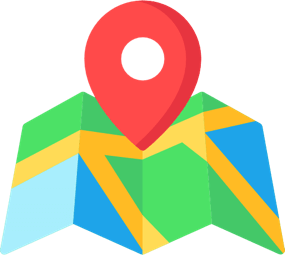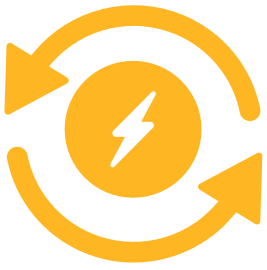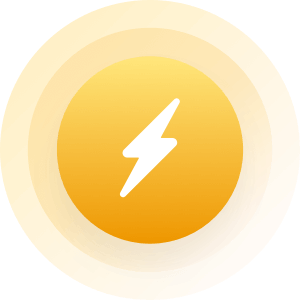| Topic: World in the net of total spying. | |
|---|---|
|
Posting their personal photos withvarious comments online, most users do not give a thought tothe fact that they willingly place themselves under thecontrol of a large number of interestedindividuals and organisations. Several companies specializing in software are developing programmes for monitoring people’s activities with the help
|
|
|
|
|
|
Surveillance cameras at airports, subways, banks and other public venues are notthe only devices tracking you. Inexpensive, ever-watchful digital sensors are now ubiquitous.
They are in laptop webcams, video-game motion sensors, smartphone cameras, utility meters, passports and employee ID cards. Step out your front door and you could be captured in a high-resolution photograph taken from the air or street by Google or Microsoft , as they update their respective mapping services. Drive down a city thoroughfare, cross a toll bridge, or park at certain shopping malls and your license plate willbe recorded and time-stamped. Several developments have converged to push the monitoring of human activity far beyond what George Orwell imagined. Low-cost digital cameras, motion sensors and biometric readers areproliferating just as the cost of storing digital data is decreasing. The result: the explosion of sensor data collection and storage. Over the next couple of years, the volume of data generated by digital sensors will surpass the flow of e-mails and social-network entries combined, predicts Stephen Brobst, chieftechnical officer at data analytics firm Teradata . "Sensors will touch nearly every aspect of our lives," he says. Meanwhile, technology is rapidly being developed to efficiently mine this mushrooming trove of sensor data in novel ways. Affectiva,a Waltham, Mass., start-up, for instance,recently introduced biometric wristbandscapable of monitoring tiny changes in sweat-gland activity to gauge emotional reactions. Therapists are using the wristbands with autistic children to better understand emotional outbreaks.Marketing consultants use the bands to pinpoint what pleases or frustrates shoppers. At the recent International Consumer Electronics Show in Las Vegas, Intel and Microsoft introduced a prototype of an in-store digital billboard that can memorize your face. The technology soon could be used in billboards capable of keeping track of the products you're interested in, much as depicted in the Tom Cruise sci-fi movie Minority Report . "Computing and connectivity are going to transform retail," boasted Intel CEO Paul Otellini , as he unveiled the billboard during a speech at CES. "Your experience in every store will soon be customized to you." Privacy worries But before the blessings of pervasive monitoringcan be fully realized, privacy concerns need to be addressed, says Chris Wolf, director of privacy and information management at Chicago law firm Hogan Lovells. "What's new is the capacity for databases to share data and therefore toput together the pieces of a puzzle that can identify us in surprising ways — ways that really could be an invasion of privacy," Wolf says. Some enterprising attorneys already have begun to use bridge tollbooth records to establish travel patterns of wayward spouses in divorce cases. And police looking to issue traffic citations now correlate photos, taken by cameras perched above busy intersections, with vehicle ownership records. Ryan Calo, director of the Consumer PrivacyProject at the Stanford (University) Center for Internet and Society, can imagine an escalation of troubling scenarios. Advertisers could customize pitches in sneakier ways. Or worse, data correlated from multiple sensors could be used to deny you a job, cut you off from insurance coverage or lower your credit status. "You will constantly feel under observation," Calo says. "You'll never have those crucial moments of freedom from the feeling of scrutiny." Lee Tien, senior staff attorney at the Electronic Frontier Foundation advocacy group, believes government agenciesand corporations willfind it difficult to resist tapping deeperinto sensor data. "If there's money to be made or a mission to be accomplished by correlating this data, it's the height of skepticism to argue that it's never going to happen," he says. Anthony Valenti, managing director ofcyberforensics firm Stroz Friedberg, is one of those skeptics.Valenti, a former federal prosecutor, says government agencies are too fractured and corporations too timid to systematically profile individuals. "You can photograph me all you want," Valenti says. "The only people who should be really concerned are the bad guys." Maybe so. But technologists and privacy advocates arewatching closely for potential flash points, in particular apractice advocated by Google and Facebook called photo tagging. Google and Facebookare using cutting-edge facial-recognition software to juice up their popular online photo-editing and sharing services, Google Picasa and Facebook Photo Albums. Both technology giants encourage users to assign names to people in photos, referred to astagging. Facial-recognition software then goes to work indexing facial features much the way a fingerprint expert takes note of swirls in a thumbprint. Once an individual in a photo is tagged, the software then looks for similar facial features in untagged photos. This allows the user to quickly group photos in which the tagged person appears. Google and Facebooksay privacy is protected because photo tagging is designed strictly for use by individual consumers within their personal accounts. Chilling effect Still, by promoting photo tagging, the tech rivals are in something of an arms race to amass the largest possible caches of tagged photos, says Stephen Russell, founder and chairman of 3VR, maker of video facial-recognition software for security and commercial uses. Once you are tagged in a photo, that photo could be used to search for matchesacross the entire Internet, or in privatedatabases, including those fed by surveillance cameras."They almost certainly have the technical capability to do it," Russell says. Stanford privacy expert Calo worries that photo tagging could easily be extended to other uses, besides just grouping one's personal photos. The technology conceivably could enable a car dealer totake a photo of you as you step onto his car lot. The dealer could then quickly profile you on the Web, to gain an edgein making a sale. Or a stranger in a mall or restaurant could photograph you, then go online to profile you."People will be able to instantaneously find out about you," Calo says. Wolf, the privacy attorney, says the right to move through public placesanonymously could be at risk. "We don't have to tell everybody we pass on the street our name, phone numberand address," Wolf says. Losing the right to anonymity, he says, could "really have a chilling effect on where we go, with whom we meet and how we live our lives." Google is well aware of rising privacy concerns. It has stepped carefully in introducing Goggles, a free online service that allows you to use a very mobile sensor — a smartphone camera — to photograph a landmark or a book jacket, then instantly navigate to Web pages carrying information about the object. Notably, the search giant drew the line at letting Goggles users do something similar with snapshots of people."There are some important transparency and consumer control issues we still need to think through before including this functionality," says Google spokesman Brian Richardson. Still, in a world of pervasive sensors, troubling data correlations are cropping up in unanticipated ways. For instance, most consumers are ignorant about how smartphones equipped with GPS location finders routinely "geotag" photos and videos, embedding images with the longitude and latitude of the location shown in theimage. Last summer, industrial designer Adam Savage , co-host of the TV show MythBusters , used his iPhone to snap a photo of his Toyota Land Cruiser parked in front of his house, then posted iton Twitter . In doing so, Savage, in effect, publicly disclosed where he lives. You could be supplying bad guys with useful intelligence by posting on social networks or photo-sharing sites smartphone images showing children playing on the lawn or expensive vehicles or valuable household items, says Jonathan Mayer, a research fellow at the Stanford Center."There's so little transparency in what's going on," Mayer says. "We should be concerned about things like accidental social oversharing, purposeful but unwanted social sharing, government overreaching and security breaches." http://usatoday30.usatoday.com/tech/news/2011-01-26-digitalsensors26_CV_N.htm |
|
|
|
|






